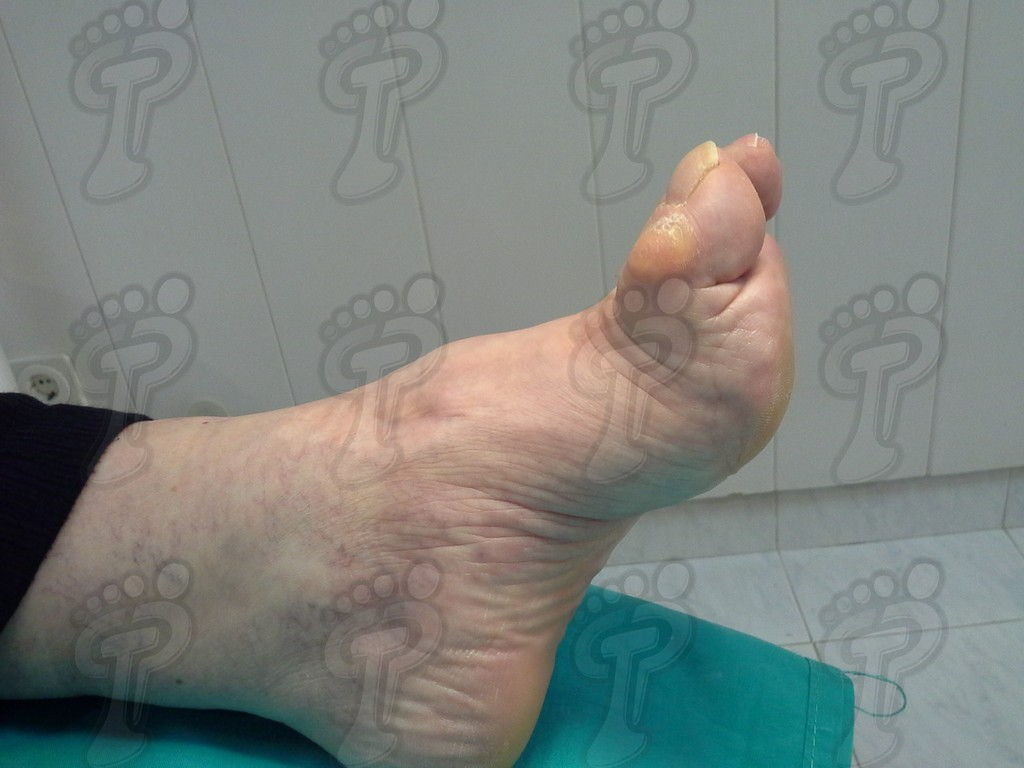
There are several causes of hallus flexus:
Surgical procedure on clubfoot in children, congenital origin (Clubfoot, metatarsus primus adductus, etc); paralysis of the extensor hallucis; trauma (e.g. the entrapment of the flexor hallucis), cerebral palsy; or poliomyelitis. Examining these patients, we found some common denominators, such as:
- presence of hypertension or contracture of the flexor hallucis; presence of hypotonia or atrophy of the extensor hallucis longus;
- contraction of the anterior tibial muscle at the first metatarsal, pes cavus;
- dorsiflexion of the first metatarsal, presence of plantar hyperkeratosis on the first metatarsal head; as well as on the dorsal side of the interphalangeal joint (by friction with shoes);
- metatarsal scanning shows an irreducible dorsiflexed.
Conservative therapy aims to alleviate the symptoms caused by hallux flexus as well as its reduction to the extent it can. To do this, depending on the cause of hallux flexus and clinical history of each case, we can employ various treatments, of which the most common are:
- Silicone orthotics to protect areas of friction with the footwear and/or reduce the hallux flexus slightly.
- Plantar supports if there are metatarsalgias for pes cavus or supinated.
- Physiotherapy affecting the muscles involved.
When conservative treatments are not sufficiently effective, we recommend surgical treatment for the hallus flexus. This surgery will basically affect the arthrodesis of the interphalangeal joint, the arthroplasty of the metatarsophalangeal joint and assessment of an osteotomy at the base of the first metatarsal and the proximal phalanx to correct its position. If necessary, a lengthening of the flexor tendons and a shortening of the extensor tendons will be undertaken.
